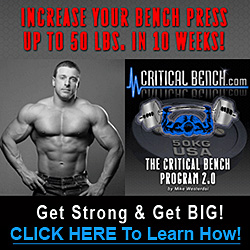As you watch those infomercials on the television, you see models, stars, and actors all boasting their fabulous body with their flat, sculpted tummies. And it is frustrating each time, isn't it? Why? It's because while these people make it look like it is easy to get a six-pack abs, you don't seem to easily achieve that without difficulty. But, have you been doing the right thing? The truth is you can have a nice, sculpted midsection if you know what is needed to get it.
Unfortunately, most of the times people are just so caught up in having a really flat and firm stomach that they concentrate on doing abdominal exercises and forgetting other essential factors to actually be successful in their goal.
One of the reality checks accounts on the fact that the factors, which those models dictate the viewers why our belly goes flabby and ugly, are too countless that keeping track seems difficult already. Gender, genetics, age, health condition, lifestyle, and many other factors are accountable how your midsection looks. Men, specifically, do tend to have fats stored around the midsection of their body, giving that unpleasant spare-tire look effect. While women, on the other hand, accumulates fat deposits on the lower tummy area resulting to that annoying belly pooch effect.
Exercising and reducing body fats can help, but the thing is, you can't tell where you will lose fat as you do it. Getting a six-pack abs is a little more complicated than that as it can be difficult to most to work out on the midsection to make it flat and sculpted. That is the reason why it is really important to have a great overall program for this goal in order to successfully achieve it. The problem when trying to set a goal of having a six-pack abs is you have to lower body fats to a certain level, which can either be a struggle for you to sustain or can be downright unhealthy for you.
If this fact is true to your case, reaching that goal can be near impossible and can only make you frustrated. The only solution for this is for you to set realistic goals which you know you can achieve even after quite a time. And being realistic with goals you know your body can achieve should mean accepting whatever flaws and imperfections your body still possesses even after undergoing a certain program. And instead of getting frustrated, it will be a lot of help if you start challenging yourself by not only accepting those imperfections but taking care of your overall physical health and look as well.
If you continue watching those various types of infomercials on how to build six-pack abs, you might get reared on the direction of its misleading, ugly head. Those bizarre weight loss gadgets, abdominal exercise machines, and weight loss supplements and pills selling for hundreds of bucks, be very vigilant on this especially when they claim guaranteed loss of weight after a short time. Always remember that with matters such as this, there is no overnight or quick fix available.
Having a sculpted, toned, firm and healthy body means hard work. Furthermore, you don't really need some special gadgets or exercise machine to work on your abs. Proper nutrition, right cardiovascular training exercises, and abdominal exercises are the things you need to give you that nice six-pack on the abs.











